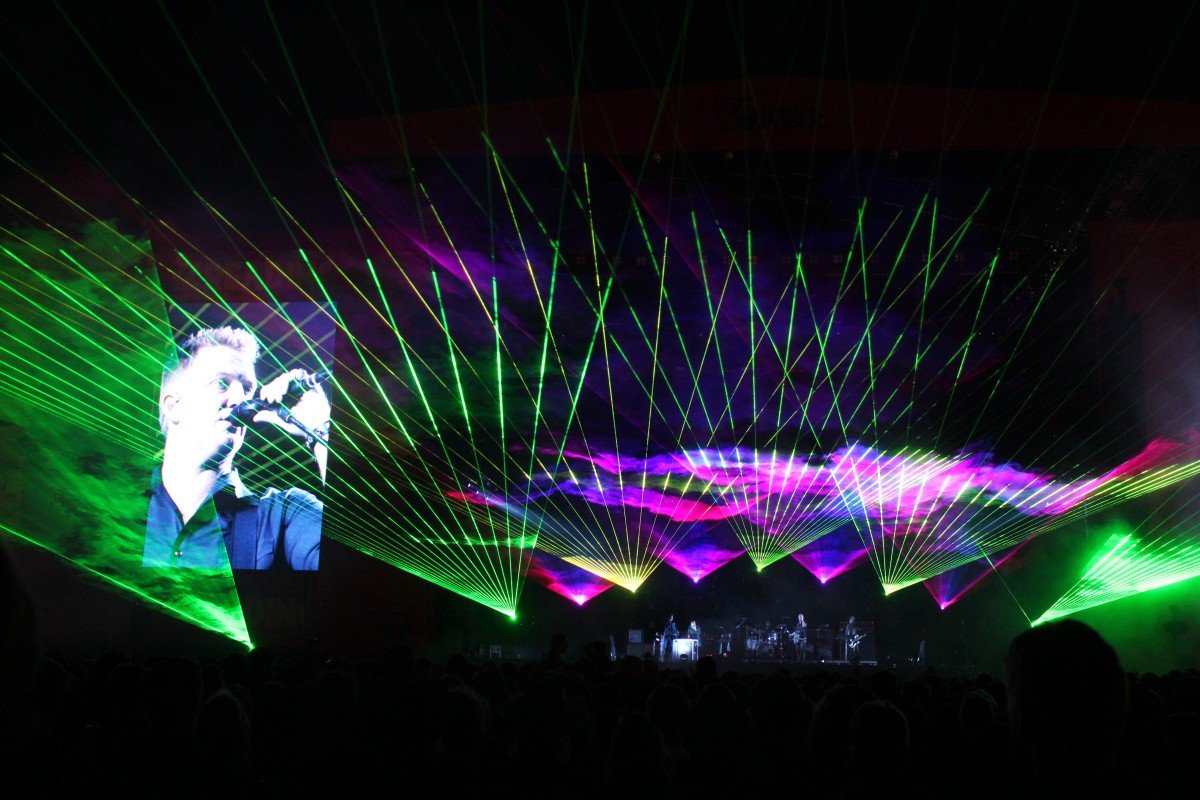
Queens of the Stone Age used lasers on their tour in 2014. Image © ER Productions
The UK has a vibrant events and entertainment sector but it is not risk-free. Sarah Davidson highlights a forthcoming safety guidance update, which goes out for public consultation this spring.
The entertainment sector covers a diverse range of activities and events, from discos and plays to pop concerts. Audiences now expect more from an event and lasers are often used to enhance a performance.
For instance, the Doctor Who Live Tour in 2010 used laser beam projections to add drama to Daleks emerging out of the shadows. Both the Queens of the Stone Age, at Reading and Leeds in 2014, and Katy Perry during her 2014 world tour, used 13 laser-scanning arrays and over 20 laser diffraction units as part of their performances.
The technology and portability of equipment has improved dramatically over the years and this enables a wider use of equipment as well as the creation of more complex displays. As a result, laser usage as a special effect (SFX) in large and also smaller venues, such as pubs and clubs, has grown in popularity. However, the technology is not risk-free. The lasers are typically class 3 and have the potential to cause skin burns, eye damage and pose a fire risk.
To aid safe laser display use, HSE provided guidance in the form of The Radiation Safety of Lasers Used For Display Purposes (HSG 95) in 1996. However, this guidance will soon be withdrawn as advances in laser technology mean that general safety guidance is no longer sufficient to protect the public and workers.
To replace this guidance, HSE approached the Professional Lighting and Sound Association (PLASA), an international trade association with a 1,200 strong membership for the events, entertainment and installation industry, to ask them to support the development of improved guidance.
Over the past two years, a working group comprised of technical specialists drawn from production safety management, major venues, Public Health England, enforcement bodies, laser users and display system developers have been meeting to agree the content.
The working group undertook a critical review of the SFXs created and the technology used. This review considered everything from show design, management and communication and highlighted where HSG 95 fell short of meeting the demands of current laser use. It also identified who the key duty-holders were.
One of the main findings was the importance of risk communication in preventing unwanted/unknown beam exposure. In response, the working group added the plan-do-check- act methodology throughout the guidance to enhance its practical application.
By reviewing best practice, the resulting guidance takes into account both simple and complex laser show design, including audience and laser scanning (where the beams sweep past the faces of audience members). Importantly, this means that the reader understands clearly the risks associated with this high-hazard effect as well as the assessment methods and control strategies that need to be used to determine if these activities are safe.
The guidance also addresses sector concerns, most notably what constitutes laser safety control. It answers key questions such as:
- Is software a sufficient safety control?
- What controls should be put in place when more than one laser is involved?
- Is it okay to isolate a problematical beam or does the whole display have to be stopped in an emergency?
The final draft will be agreed shortly and the aim is to publish the guidance for public consultation late spring. HSE’s publications governance group will also assess the final draft at the same time to finalise the foreword.
Anyone interested in participating in the consultation should contact Ron Bonner at PLASA at: [email protected].
Sarah Davidson is a health and safety consultant at Human Applications and is a member of the PLASA laser guidance review committee
The Safety Conversation Podcast: Listen now!
The Safety Conversation with SHP (previously the Safety and Health Podcast) aims to bring you the latest news, insights and legislation updates in the form of interviews, discussions and panel debates from leading figures within the profession.
Find us on Apple Podcasts, Spotify and Google Podcasts, subscribe and join the conversation today!


